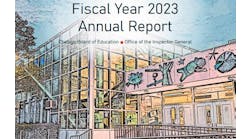Schools are spending more on complex building systems, yet some are not getting the performance they expected. Thus, they are becoming more interested in verifying the installation and performance of technology systems prior to final acceptance. This quality-assurance process, known as commissioning, can ensure that technology systems are designed, installed, tested, and capable of being operated and maintained to perform as intended.
Many commissioning activities span the entire construction process from pre-design through construction and acceptance. Although this may be desirable, schools may not be willing to pay one more fee for work that should be done correctly the first time. However, retaining an independent commissioning agent (CA) after the project is completed can be wise.
For example, a school district in the Midwest opened a new high school and middle school this year and experienced problems with its technology systems from the start. An investigation by an independent commissioning agent revealed several major deficiencies in the installation of the technology systems — missing equipment components, substitution of less expensive equipment, and equipment configured improperly. The cost to rectify the identified problems totaled about $82,000. The agent's fee turned out to be a wise investment.
The commissioning agent becomes the “keeper of the gate” when it comes to reviewing the technology specifications and installation for compliance with the school's intent. The CA is an objective advocate for a school, and ideally an independent third party. Duties of a CA:
-
Reviews technology plans and specifications.
-
Reviews bid documents and change orders.
-
Develops checklists of equipment and systems to be commissioned.
-
Assembles a commissioning team (contractor, sub-contractors, etc.).
-
Verifies that all hardware and software meet bidding specifications.
-
Verifies that all equipment has been installed and configured properly.
-
Tests performance and efficiency of hardware and software.
-
Verifies the delivery of specified training, operations and maintenance documents.
-
Provides a final report that compiles all commissioning documentation and describes status of all issues.
-
Identifies responsibility for resolution of any remaining issues.
Systems that should be commissioned include wiring infrastructure; data networking systems; telephone systems; video systems; speaker, paging/intercom and clock systems; security systems; and wireless systems.
A number of reports have found that technology commissioning can range from 10 to 25 cents per square foot. The school should establish an allowance to cover the cost of commissioning as part of the bid documents. Also, it should maintain a reserve of contract funds until all issues have been resolved.
Day is senior analyst at KBD Planning Group, Bloomington, Ind., a firm specialized in educational facilities and technology planning. He can be reached at [email protected]. www.kbdplanning.com

